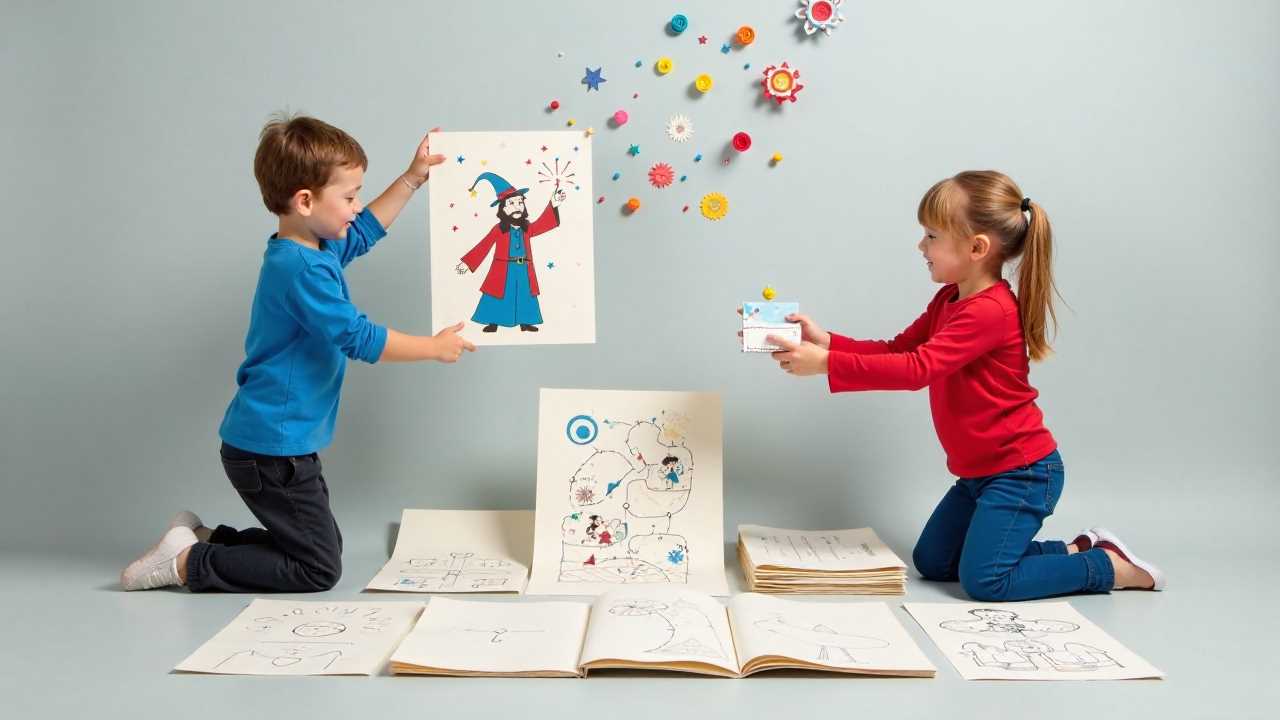
The Allure of Paper Fortune Tellers
Paper fortune tellers, often referred to as cootie catchers, are a delightful blend of creativity and playfulness that captivates both children and adults alike. These charming creations are not just toys; they are a gateway to a world of imagination and artistic expression. By incorporating techniques from origami, scrapbooking, and other paper crafts, we can transform simple sheets of paper into intricate designs that tell stories and spark joy.
Understanding the Basics of Paper Fortune Tellers
Creating a paper fortune teller begins with a square piece of paper. The beauty of this craft lies in its simplicity. Children can easily fold the paper into a shape that opens and closes, revealing fortunes or playful messages hidden within. This engaging activity not only fosters creativity but also enhances fine motor skills and spatial awareness.
To begin, we fold the paper diagonally in both directions, creating an "X" shape. Then, we fold each corner into the center, forming a smaller square. This foundational step is crucial, as it sets the stage for the intricate designs that will follow.
Incorporating Origami Techniques
Origami, the Japanese art of paper folding, plays a significant role in enhancing the aesthetic appeal of paper fortune tellers. By integrating origami techniques, we can create elaborate designs that elevate the standard cootie catcher into a work of art.
For instance, we can use patterned origami paper to add visual interest. The vibrant colors and intricate patterns can transform a simple fortune teller into a stunning centerpiece for a party or gathering. Additionally, we can incorporate origami animals or flowers as embellishments, making the fortune teller not only functional but also a beautiful decorative piece.
Scrapbooking: Adding Personal Touches
Scrapbooking allows us to personalize our paper fortune tellers in unique ways. By using stickers, stamps, and decorative paper, we can create themed fortune tellers that resonate with specific occasions or interests.
For example, a birthday-themed fortune teller could include fun activities or wishes for the birthday child. By incorporating photographs or drawings, we can further personalize the experience, making it a cherished keepsake. The act of scrapbooking encourages children to express their individuality and creativity, making each fortune teller a reflection of their personality.
Collage Techniques for Creative Expression
Collage is another fantastic technique to enhance the visual appeal of paper fortune tellers. By cutting out images from magazines or using colored paper, we can create a collage that tells a story or conveys a theme.
Imagine a fortune teller decorated with images of nature, animals, or favorite characters. Each flap can reveal a different aspect of the collage, inviting users to engage with the artwork as they play. This method not only encourages creativity but also teaches children about composition and design.
Exploring Card Making Elements
Integrating elements of card making into paper fortune tellers can add a layer of sophistication and personalization. We can use cardstock for sturdier construction, allowing the fortune teller to withstand more use.
Adding messages or quotes inside the fortune teller can turn it into a thoughtful gift. For instance, a fortune teller filled with inspirational quotes can serve as a daily reminder of positivity and encouragement. This approach not only enhances the functionality of the fortune teller but also deepens its emotional significance.
Engaging with Paper Mache
While traditional paper fortune tellers are flat, we can take creativity a step further by incorporating paper mache techniques. By creating a three-dimensional fortune teller, we can introduce a new level of interaction and play.
Using a balloon as a base, we can layer strips of paper soaked in glue to form a hollow shape. Once dried, we can cut an opening and decorate the exterior with paint or collage materials. This unique twist on the classic fortune teller can serve as a fun party game or a decorative piece for a child’s room.
The Art of Paper Cutting
Paper cutting is an intricate art form that can add delicate details to paper fortune tellers. By carefully cutting patterns or designs into the paper, we can create stunning visual effects that enhance the overall appearance.
Imagine a fortune teller adorned with intricate lace-like patterns or whimsical shapes. This technique requires patience and precision, making it an excellent way for older children to develop their fine motor skills. The result is a beautifully crafted piece that showcases the artistry of paper cutting.
Encouraging Creativity and Imagination
Engaging in the art of creating paper fortune tellers fosters creativity and imagination in children. Each step of the process, from folding to decorating, encourages them to think outside the box and express themselves.
As children experiment with different techniques—whether it’s origami, scrapbooking, collage, card making, paper mache, or paper cutting—they learn valuable skills that extend beyond crafting. They gain confidence in their abilities, develop problem-solving skills, and cultivate a sense of accomplishment as they see their ideas come to life.
A Crafting Adventure Awaits
The world of paper fortune tellers is rich with possibilities. By blending various paper crafting techniques, we can create unique and engaging projects that inspire creativity in children. Whether through origami, scrapbooking, collage, card making, paper mache, or paper cutting, each method offers a new avenue for artistic expression.
As we embark on this crafting adventure, let us celebrate the joy of creating and the magic that unfolds through the simple act of folding paper. The art of paper fortune tellers is not just about the final product; it’s about the journey of creativity and the memories made along the way.
 Kids Art ProjectsParty PlanningPaper CraftsOrigami for KidsPrivacy PolicyTerms And Conditions
Kids Art ProjectsParty PlanningPaper CraftsOrigami for KidsPrivacy PolicyTerms And Conditions
